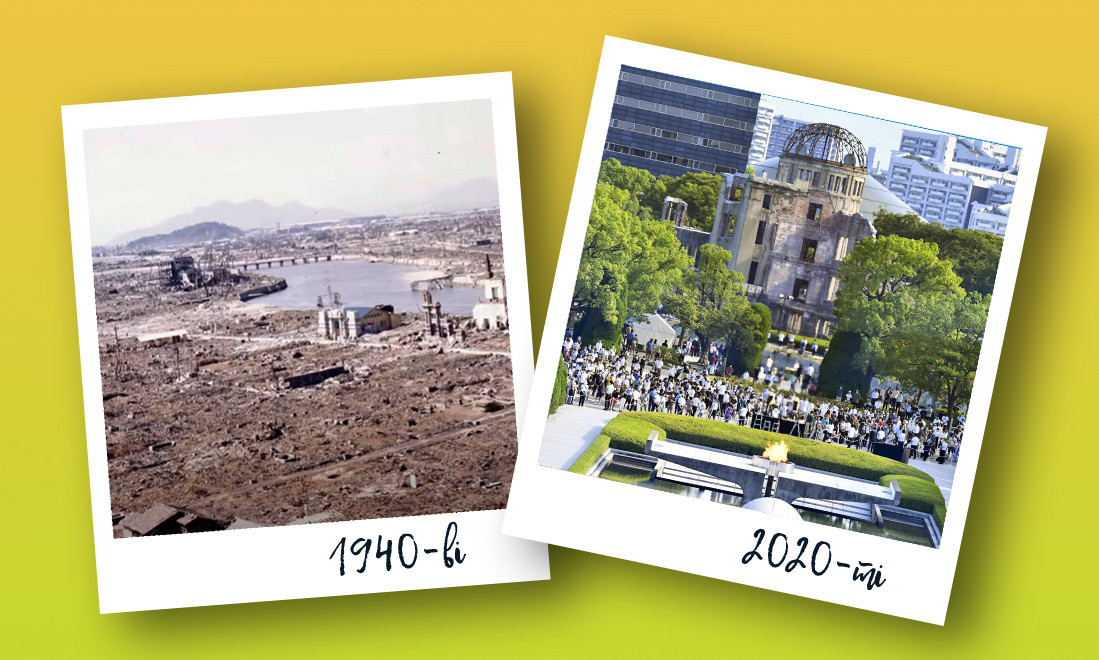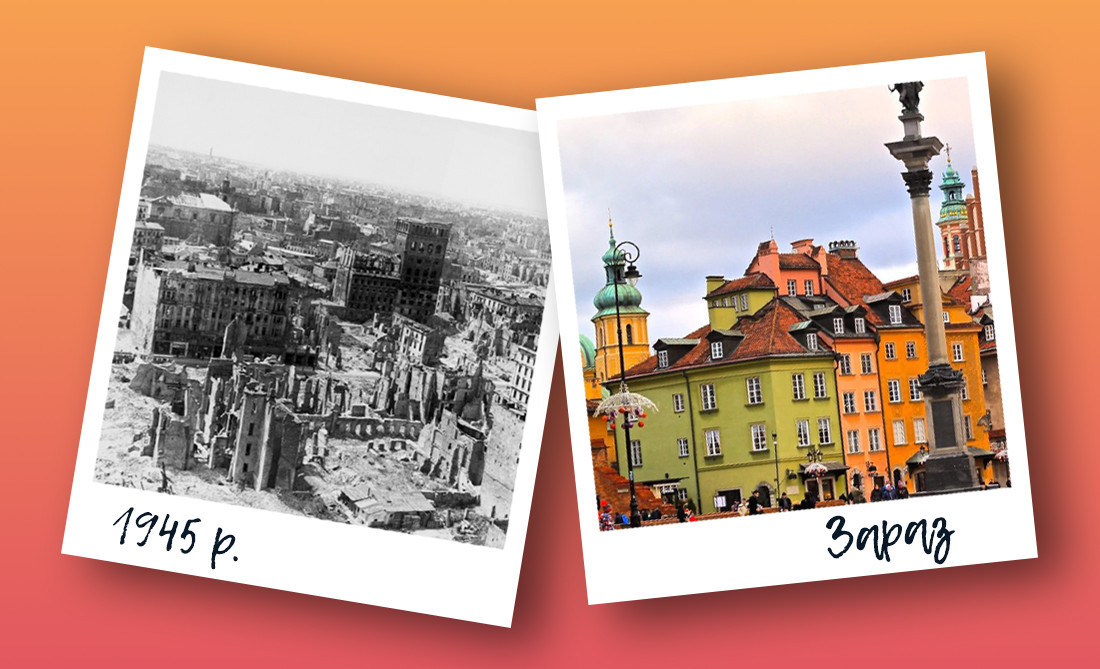The Ukrainian military are taking back Ukrainian lands step by step and bringing our victory closer. In recent months alone, hundreds of Ukrainian flags have flown again over the territories previously occupied by russia.
Russia is leaving behind suffering and destruction, destroying entire towns and villages, and bringing pain to every home. Ukraine will definitely return and rebuild all the occupied territories. And we already realize that the scope of reconstruction will be significant. Thus, as of September 1, 2022, the total amount of direct documented losses to residential and non-residential real estate and other infrastructure amounted to more than USD $127.0 bln.
In order to increase the effectiveness of reconstruction, we should look to the experience of other countries’ post-war reconstruction. We should study their initiatives and projects to minimize risks and miscalculations.
Since May, the team of the Transparent Cities Program (Transparency International Ukraine) has been studying the global experience of reconstruction with a focus on tips on how to start recovery, and implement effective projects and practices.
In this material, we have collected the most vivid life hacks of the reconstruction of foreign cities that were once affected by hostilities.
How does the reconstruction process begin?
The start of the reconstruction process was different in the cities studied. However, it is this process that determines the foundation” for further steps.
Practice shows that it is worth thinking about reconstruction of cities without waiting for the end of the war. For example, the reconstruction of Warsaw began in 1945, before the end of World War II. There were two reasons for this. Firstly, it was necessary to provide temporary housing for residents who returned to the capital. Secondly, it was necessary to solve the problem of dense and chaotic construction, lack of green spaces and recreation facilities, and the division of land among thousands of private owners.
Any process should begin with the creation of a master plan and all supporting documents. This will help to create a general vision of the city's development, to understand which places and buildings will become the main accents in the city's architectural ensemble, and to determine which trends will dominate in architecture.
This is how the rebuilding of Hiroshima began. After the nuclear explosion, experts predicted that not a single blade of grass would grow in Hiroshima for the next 75 years. However, by the early 1960s, it was almost completely restored, and in 1985, more than a million people lived in the city. People began to return, even though they did not understand whether it was safe there after the nuclear strike. There were not enough funds for large-scale reconstruction. But in 1949, Hiroshima was marked as a city of peace, and the state allocated money from the budget for its reconstruction.
 Reconstruction of Hiroshima, Japan
Reconstruction of Hiroshima, Japan
Before the construction work begins, we face another important challenge: clearing the rubble, dismantling construction debris, and assessing the extent of the damage. This is where everyone started their reconstruction. In addition, cities tried to rationally use the wastelands that were created after the rubble was cleared. For example, in Rotterdam, such places were turned into fields of corn to solve food problems. Lebanon has a negative experience with construction waste. During the reconstruction of Beirut, the authorities cleared the rubble and transported the remaining construction waste to the sea coast. Mountains of construction waste are still stored there.
How can the authorities ensure an effective reconstruction process?
The effectiveness of government decision-making directly affects how the reconstruction process will be organized. Therefore, it is important to consider a number of practical issues.
First of all, post-war reconstruction of cities should take into account the historical and cultural characteristics of the territory. For example, in Coventry, UK, this approach was followed during the reconstruction, sometimes adding a touch of lightness and humor to the architecture. One of the facades of the building depicts the figure of Lady Godiva, who, according to legend, rode naked through the city, thus demanding that her husband, the Earl, reduce taxes for residents. At the same time, when rebuilding Gdańsk, the Poles wanted mostly to abandon the Prussian heritage, even if the city had looked completely different as a result.
In order to choose the most effective approach to reconstruction, as well as the most optimal recovery plans, a diversity of opinions is needed, which will be provided by competitions among architects and urban planners. In addition, such a competition would create space for creativity. For example, in Berlin, by 1961, competitions were used to try to find common architectural solutions for the city, which was divided in half and controlled by different countries.
Another important point that authorities should pay attention to is the management of the reconstruction process. For example, a special ministry of reconstruction and urban planning was created in France for post-war reconstruction. An architect or planner was assigned to each municipality and funding was allocated for reconstruction. However, this case was not without special conditions: if the city refused the architect assigned to it, it did not receive money for reconstruction either.
Furthermore, representatives of public authorities should remember that successful reconstruction is impossible without taking into account the requests and needs of residents. This is evidenced by the experience of most countries.
For example, in Le Havre, France, residents were surveyed about road junctions, the need for shops, and other infrastructure. In addition, they were asked for opinions on buildings and the meanings they should carry.
In London, the rebuilding plans were popularized through exhibitions: people could evaluate what they wanted their city to look like in the future. However, sometimes architects lacked feedback from the community. For example, when after 1947, there was a requirement to pay more attention to the technical aspects of the plan, it became difficult for ordinary residents to understand them.

Reconstruction of London, UK
In Beirut, however, residents' opinions were not asked. Therefore, residents have an extremely negative opinion of the city's reconstruction. Because the outskirts and the center of Beirut were rebuilt differently, these areas are very different from each other. This does not make the city feel like a whole. Different neighborhoods are home to groups with sometimes opposing beliefs, which creates risks for confrontations.
In order for citizens to take a more active interest in rebuilding, the authorities should popularize this process. For example, in Rotterdam, the reconstruction process was covered in films, bus tours, and books with photos of the new city. In London, on the other hand, people were discussing the blueprints and even the materials that were proposed to be used for the reconstruction.
What mistakes should we avoid?
The rebuilding of different cities has experienced both victories and failures. Therefore, Ukraine should pay attention to all the peculiarities that arose during the reconstruction.
For example, after the post-war reconstruction, Warsaw created so-called functional zones with a clear purpose: residential areas, office blocks, and places for recreation and shopping. These areas turned into a kind of ghetto that did not consider the needs of the residents. It turned out that people could do only one type of activity there — either rest or work. This resulted in massive traffic from home to work and vice versa, causing traffic jams at the entrance to office blocks or residential areas.
 Reconstruction of Warsaw, Poland
Reconstruction of Warsaw, Poland
The main stage of Rotterdam's reconstruction was completed in the 60s of the last century, and almost immediately new problems and dissatisfaction among residents arose. The reason was that the city had few pedestrian and green areas, and too much traffic due to the presence of wide avenues. At the same time, due to the lack of housing and cultural attractions, the center was emptied after the closure of retail outlets.
It is noteworthy that these problems could have been avoided if the residents had had a real, not nominal, influence on the reconstruction process.
Representatives of the relevant agencies should pay attention to the organization of the reconstruction of Beirut and considers the mistakes made there. To rebuild the city center, the Lebanese authorities established the Solidere joint-stock company in 1994. The company did not hold open architectural competitions, but only imitated transparency — the winners were determined in advance. As a result, this approach to reconstruction created a number of problems for the city. The architects wanted to preserve the look of the city right before the outbreak of hostilities, but they did not remember the old historical times. Residents of Beirut say that Solidere destroyed more than was necessary. Reconstruction has had a significant impact on the city's demographics. Although the total population of Beirut has grown due to the influx of people from other regions, the city center has been emptied.
When rebuilding cities, one should not forget about the restoration of iconic historical buildings because experience shows that over time, residents will want them back. For example, in socialist Dresden, the authorities were against the restoration of the Frauenkirche, a symbolic church for Germans, which was completely destroyed. It was not until the mid-1970s that the city realized how much it had lost in terms of architecture. Due to a lack of funds, the church was restored only in the early 2000s.
Tips for ensuring an effective reconstruction process
Based on the analysis, the Transparent Cities program team advises all parties involved in the reconstruction process in Ukraine to consider the following points.
- In the course of reconstruction, space should be given to the creativity and self-expression of both professionals and ordinary people. The city should be collective and inclusive, and everyone should participate in its reconstruction. The top-down system is no longer relevant and holds back many creative ideas. For example, the Netherlands has an independent advisory committee. It discusses architectural projects with citizens, developers, and activists. After that, it makes its conclusion, providing advice and comments. Only then is the project submitted to the municipality for consideration.
- The state should also consider creating an institution that would bring together lawmakers, architects, and representatives of think tanks. This will allow us to assess what is missing in the legislation for high-quality reconstruction and what solutions need to be implemented, as well as to build a new planning system that will cope with the need for large-scale and fairly rapid reconstruction.
- It is not necessary to involve star architects in post-war reconstruction. Sharing experience is good, but you need to work with those who understand the local context (cultural, historical, economic). Local architects, sociologists, and anthropologists should be engaged because they understand what works best for a particular area. This will allow considering the natural features of the territory and adapting architectural practices.
- It is important to rebuild sleeping areas and suburbs, with an emphasis on pedestrian spaces, the use of alternative energy sources, etc. We should also think about creating places that have a dual purpose. For example, in times of war, a place with food and water supplies where you can hide from bombing, and in peacetime, a public space. In addition, temporary buildings do not have to be ugly or ill-conceived, as they can be used to build permanent facilities, such as libraries, museums, or food outlets.
- In the wake of reconstruction, cities that have not suffered significant damage also need to pick up the trend towards change. Unless they do so, they will be left behind in the new urban and economic system.
Finally, cities need to expand their twinning networks. Foreign municipalities are ready to help rebuild Ukrainian cities. Thus, 200 European cities have united to rebuild our country.